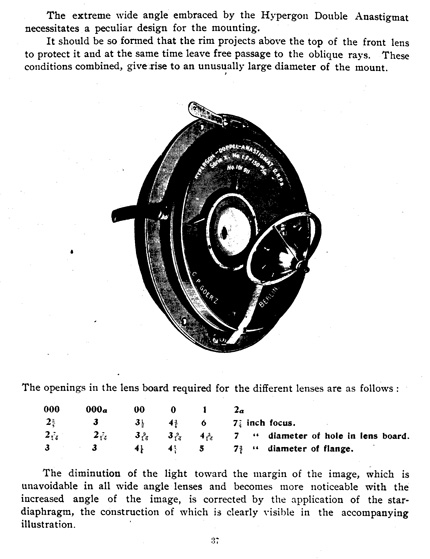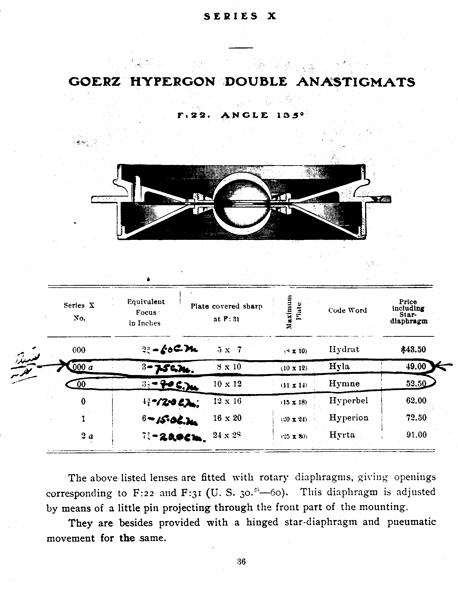


Access to such a great vantage point is necessary for such an image. My thanks go out to Kurt and Michelle Penn who allowed me to take pictures from the balcony of their office on the 13th floor of the Cold Storage Building which had been converted to offices and apartments. The parking lot in the foreground of the image could not be expected to last long in a large city. There is now a building on that parking lot that blocks the view. Also in the photograph is K&S Photo Lab. That lab is no more. I thank Michael of K&S for selling me several 8X10 enlargers and large format lenses and for allowing me to Photograph from the roof of his building. And I thank Voytek Kubalski of Voytek Studio and Lab for introducing me to Michael. Voytek Lab and K&S Lab went the way of so many labs of late. It is up to you and me to keep traditional photography alive.
The lens I used to make the extreme wide angle image of Chicago was a 90mm Hypergon. I purchased that lens from Darkroom Aids of Chicago. Most of us Chicago photographers regret the demise of Darkroom Aids. But the important Darkroom Aids personnel live on. Technician Carl Spinnler is now living in Florida. Manager Terry Grenz is now in the digital camera sales department at Calumet Photographic. Octogenarian lens repairman Frank Zemaitis is happily retired in Indiana. Darkroom sink manufacturer John Brezina is still in the business and may be found at ROSY DARKROOM PRODUCTS; John makes more than sinks. On one of my darkroom pages you will find one of his Archival SS paper washers. I just had him make a SS evaporation tray for use above a radiator.
Getting back to the Hypergon lens. What a piece of work! 2 elements, and it is entirely rectilinear and covers 140 degrees! It was designed in the 1800's. When I 1st saw the lens at Darkroom Aids and was told that it covered 8X10, I was skeptical. I received permission to return the lens if it did not cover 8X10. As a matter of fact, the lens covers 11X14! I built a custom 8X10 camera for the lens. On 11X14, the lens is too wide for me. The camera was much like a Sinar Handy. The Hypergon cannot be put into a shutter; you uncap and cap the lens to make the exposure. The lens has tremendous light fall off. A fan is installed on the front of the lens. You turn the fan by means of a bulb and tubing. You must keep the fan in front of the lens and moving for about 80% of the exposure time. Then you pull a cord that causes the fan to drop down allowing the central part of the negative to be exposed. I also had a 6X6" 25A red filter behind the lens. As I recall, my effective F-stop was F98. Because of all of these steps, a 3-4 second exposure is as close as you can come to an instantaneous exposure. The cement barge you see in the center of the image was moving pretty fast and it is slightly blurred. The lens being uncoated and of a meniscus shape has a lot of flare--and I was shooting into the sun which fortunately at the time of the exposure was behind a cloud. The resulting negative was as good as I could expect under the circumstances. A mask was required in the printing stage in order to keep virtually all but the sky from being overexposed. Well worth the effort! I also photographed the same view with a Nikon F with a 15mm F5.6 lens. That image may be seen on my 35mm equipment page as an example of what that lens, which is still available, can do.
Here are some scans of a couple of pages from a 1903 Goerz catalog.


75mm Goerz Hypergon photos. For your convenience, the home page is continued below these images.